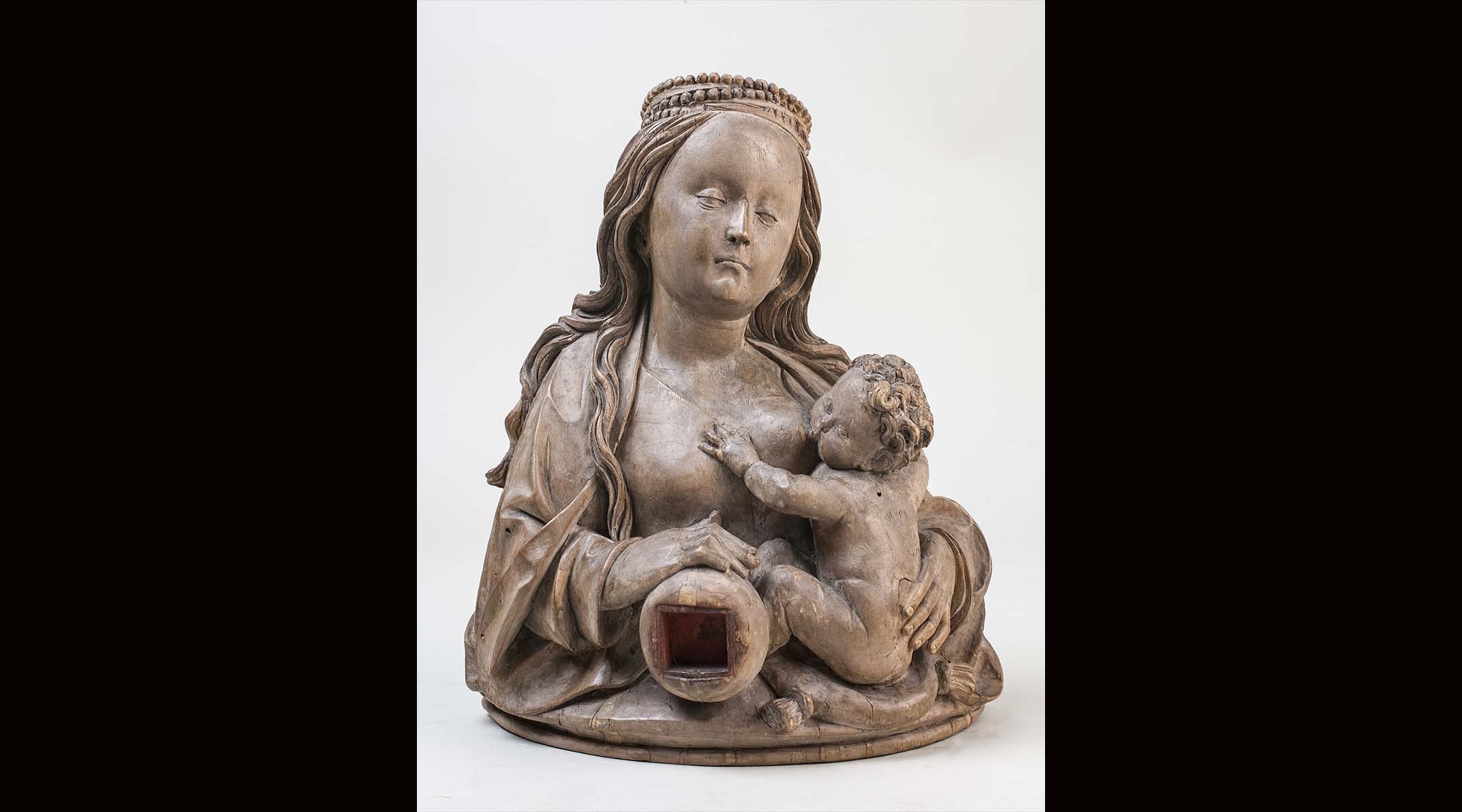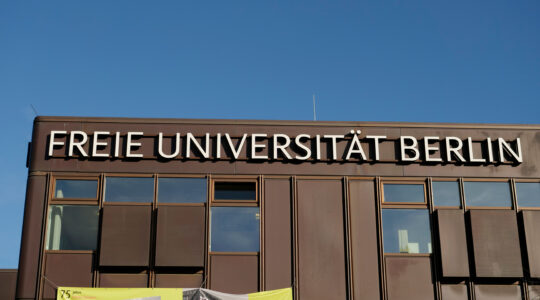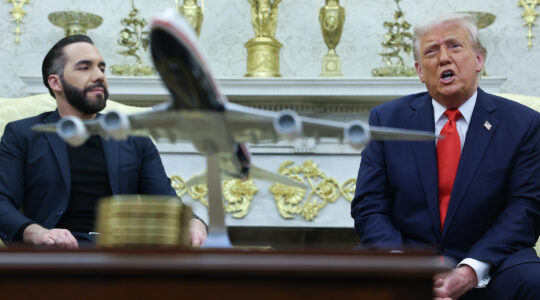BERLIN (JTA) — A federal German cultural organization has returned a 16th-century sculpture to the heirs of its pre-war Jewish owner who faced Nazi persecution.
The Berlin-based Prussian Cultural Heritage Foundation, or SPK (for Stiftung Preussischer Kulturbesitz), announced today that the “Maria Lactans” statuette depicting Mary nursing an infant Jesus would be given back to the family of German Jewish banker and entrepreneur Jakob Goldschmidt, who fled Nazi Germany soon after Hitler came to power.
Even in exile, Goldschmidt was persecuted by the Nazis, who confiscated his citizenship and the property he had left behind, the foundation noted.
“There is no doubt that Jakob Goldschmidt was a victim of individual persecution at the very beginning of the Nazi era,” SPK President Hermann Parzinger said in announcing the restitution on Tuesday.
According to the Washington Conference Principles on Nazi-Confiscated Art, an agreement on Holocaust era assets negotiated between Germany and the United States in 1998, works of art must be returned to their rightful owners or heirs upon proof that they were confiscated by the Nazis or sold under duress.
Speaking for the heirs, Berlin-based attorney Sabine Rudolph said they were grateful that the foundation had recognized the “special circumstances of this complex case and acknowledged it in the appropriate manner.” In a 2020 article about the case, Rudolph had argued that “no other Jewish banker was subjected to such malicious anti-Semitic hostility as Jakob Goldschmidt.”
Jakob Goldschmidt (1882-1955) was a prominent businessman in the interwar period in Germany and was targeted by the Nazis early on in their rise. He fled to Switzerland in April 1933, soon after Hitler came to power, and emigrated to New York in 1936. Four years later, the German government stripped him of his citizenship in absentia and then confiscated his remaining assets in Germany.
Goldschmidt had amassed an extensive art collection after World War I. After emigrating, he was able to export some objects via the Netherlands, but much of the collection remained in Berlin as security for loans and was sold at various auctions. The “Maria Lactans” statuette — attributed only to Circle of the Master of the Biberach Holy Clan — had been in Goldschmidt’s Berlin home, along with numerous other Renaissance works. When the house was sold in July 1933, three months after his departure, the artworks were taken to his office.
On June 23, 1936, around 300 works from the collection, including the “Maria Lactans” statuette, were sold off anonymously at the Hugo Helbing auction house. Art dealer Johannes Hinrichsen bought the statuette for 8,000 Reichsmarks and sold it to the Berlin State Museums that same year. The Berlin museum complex loaned it to the Ulm Museum in 1993.
According to the Prussian foundation, which oversees more than 20 museums and other cultural institutions in the Berlin area, the 1936 auction qualifies as a persecution-related property loss under the Washington Principles.
Deidre Berger, chair of the board of the Berlin-based Jewish Digital Cultural Recovery Project, called the restitution “an encouraging development. It is based on growing recognition by public institutions of the injustice of forced sales or sales under duress by Jewish families forced into financial ruin by Nazi antisemitic policies.”
The JDCRP was founded in 2019 by the Claims Conference and the New York-based Commission for Art Recovery to research and document the history of Nazi-era looted art and create a central database.
“In the 1950s, German courts continued to use antisemitic arguments to deny attempts by the Goldschmidt family to retrieve at least part of their collection, by claiming that the Jewish banker contributed to German financial problems,” Berger added. Focusing on such cases brings “overdue public attention to the long-neglected chapter of the vast amounts of cultural plunder by the Nazis and their allies.”
JTA has documented Jewish history in real-time for over a century. Keep our journalism strong by joining us in supporting independent, award-winning reporting.






